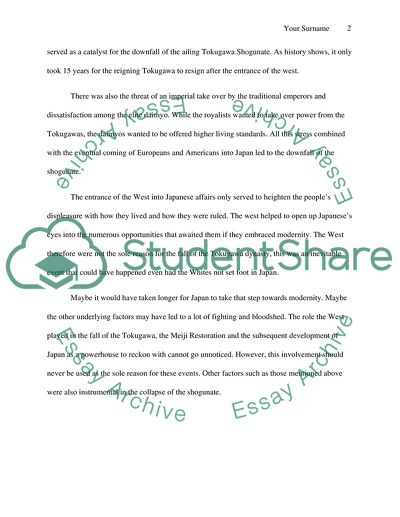Is it correct to identify the entrance of the West as the reason for Essay. Retrieved from https://studentshare.org/history/1560913-is-it-correct-to-identify-the-entrance-of-the-west-as-the-reason-for-the-fall-of-the-tokugawa-shogunate
Is It Correct to Identify the Entrance of the West As the Reason for Essay. https://studentshare.org/history/1560913-is-it-correct-to-identify-the-entrance-of-the-west-as-the-reason-for-the-fall-of-the-tokugawa-shogunate.


